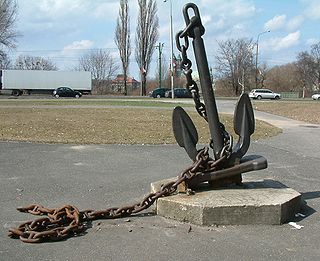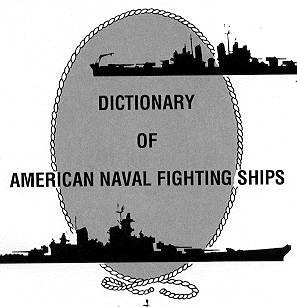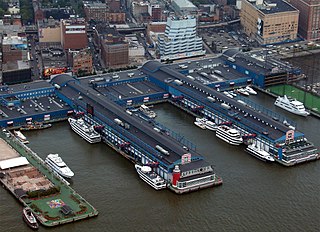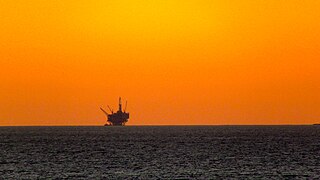
An oil platform, offshore platform, or offshore drilling rig is a large structure with facilities for well drilling to explore, extract, store, and process petroleum and natural gas which lies in rock formations beneath the seabed. In many cases, the platform contains facilities to house the workforce as well.

A mooring refers to any permanent structure to which a vessel may be secured. Examples include quays, wharfs, jetties, piers, anchor buoys, and mooring buoys. A ship is secured to a mooring to forestall free movement of the ship on the water. An anchor mooring fixes a vessel's position relative to a point on the bottom of a waterway without connecting the vessel to shore. As a verb, mooring refers to the act of attaching a vessel to a mooring.
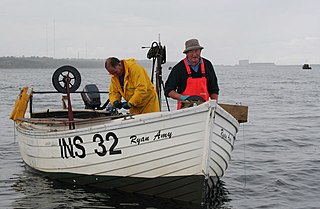
Longline fishing, or longlining, is a commercial fishing technique. It uses a long line, called the main line, with baited hooks attached at intervals by means of branch lines called snoods. A snood is a short length of line, attached to the main line using a clip or swivel, with the hook at the other end. Longlines are classified mainly by where they are placed in the water column. This can be at the surface or at the bottom. Lines can also be set by means of an anchor, or left to drift. Hundreds or even thousands of baited hooks can hang from a single line. Longliners – fishing vessels rigged for longlining – commonly target swordfish, tuna, halibut, sablefish and many other species.

"Anchors Aweigh" is the fight song of the United States Naval Academy and march song of the United States Navy. It was composed in 1906 by Charles A. Zimmermann with lyrics by Alfred Hart Miles. When he composed Anchors Aweigh, Zimmermann was a lieutenant and had been bandmaster of the United States Naval Academy Band since 1887. Miles was Midshipman First Class at the Academy, in the class of 1907, and had asked Zimmermann to assist him in composing a song for that class, to be used as a football march. Another Academy Midshipman, Royal Lovell, later wrote what would be adopted into the song as its third verse.

Sovereign of the Seas was a 17th-century warship of the English Navy. She was ordered as a 90-gun first-rate ship of the line of the English Royal Navy, but at launch was armed with 102 bronze guns at the insistence of the king. It was later renamed Sovereign, and then Royal Sovereign. The ship was launched on 13 October 1637 and served from 1638 until 1697, when a fire burnt the ship to the waterline at Chatham.

A sea anchor is a device that is streamed from a boat in heavy weather. Its purpose is to stabilize the vessel and to limit progress through the water. Rather than tethering the boat to the seabed with a conventional anchor, a sea anchor provides drag, thereby acting as a brake. Normally attached to a vessel's bows, a sea anchor can prevent the vessel from turning broadside to the waves and being overwhelmed by them.
This is a partial glossary of nautical terms; some remain current, while many date from the 17th to 19th centuries. See also Wiktionary's nautical terms, Category:Nautical terms, and Nautical metaphors in English. See the Further reading section for additional words and references.
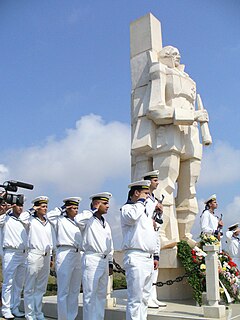
The Battle of Cape Kaliakra was the last naval battle of the Russo-Turkish War (1787–1792). It took place on 11 August 1791 off the coast of Cape Kaliakra, Bulgaria, in the Black Sea. Neither side lost a ship, but the Ottomans retreated to Istanbul afterward.

The first USS Weehawken was a Passaic-class ironclad monitor in the United States Navy during the American Civil War. She was named after Weehawken, New Jersey.
This battle took place on 6, 7 and 8 November 1772, during the Russo-Turkish War (1768–74) in the Gulf of Patras, Greece, when a Russian fleet under Konyaev defeated an Ottoman force of frigates and xebecs, destroying all 9 frigates and 10 out of 16 xebecs and losing no ships.
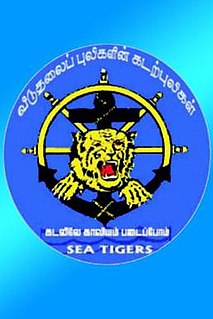
The Sea Tigers was the naval wing of the Liberation Tigers of Tamil Eelam during the Sri Lankan Civil War. It was founded in 1984. The Sea Tigers had a number of small but effective suicide bomber vessels. During its existence it had gained a reputation as a capable adversary for the Sri Lankan Navy. Over the years the Sea Tigers had sunk at least 29 Sri Lankan small inshore patrol boats and one freighter.

USS LST-31 was a United States Navy LST-1-class tank landing ship used exclusively in the Asiatic-Pacific Theater during World War II. Like many of her class, she was not originally named and is properly referred to by her hull designation. Later she was named for Addison County, Vermont, she was the only US Naval vessel to bear the name.

USS Broadwater (APA-139) was a Haskell-class attack transport built for the United States Navy during World War II. Named for Broadwater County, Montana, she was the only U.S. Naval vessel to bear the name.

USS Amphitrite (ARL-29) was one of 39 Achelous-class landing craft repair ships built for the United States Navy during World War II. Named for Amphitrite, she was the third U.S. Naval vessel to bear the name.
Underway, or under way, is a nautical term describing the state of a vessel. "Way" arises when there is sufficient water flow past the rudder of a vessel that it can be steered. A vessel is said to be underway if it meets the following criteria:

Wyuna is a former Port Phillip Pilot tender and Australian Maritime College training vessel.
The History of the anchor dates back millennia. The most ancient anchors were probably rocks and many rock anchors have been found dating from at least the Bronze Age. Many modern moorings still rely on a large rock as the primary element of their design. However, using pure mass to resist the forces of a storm only works well as a permanent mooring; trying to move a large enough rock to another bay is nearly impossible.
An acoustic release is an oceanographic device for the deployment and subsequent recovery of instrumentation from the sea floor, in which the recovery is triggered remotely by an acoustic command signal.

The Micalvi was an auxiliary vessel of the Chilean Navy.
